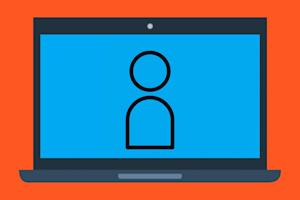Your organization’s access credentials are the metaphorical keys to the kingdom. If attackers, hackers, or other bad actors get their hands on the correct credentials, they can gain unfettered access to your systems and sensitive data. As such, credential management is vital.
Credential management helps determine who can access devices, data, and systems within your organization, thus reducing risks, enhancing security, and streamlining operations. So, what is credential management, how does it work, and what should you know about it?
Let’s explore…
What is Credential Management?
Credential management is the secure handling of user credentials within an organization, including usernames, passwords, and permissions. It involves creating, storing, updating, and deleting user credentials, as well as strong password security policies.
Credential management can also streamline access with tools like single sign-on (SSO), so users can easily access the tools they need without risk. It’s crucial for protecting sensitive information, reducing the risk of cyber attacks, and ensuring IT compliance.
Credential Management: Key Statistics to Know
So, what makes credential management so important? The answer, as with many things, lies in the data.
First, let’s look at cyberattacks. Credential theft is a significant contribution, accounting for approximately 49% of all cyberattacks (according to the State of AI in Cybersecurity Report 2024). So, protecting credentials means protecting your entire network from nearly half of all the attacks it might face.
Credential management also helps defend against common tactics used by attackers. According to areport by Verizon, 68% of breaches start because a human employee was fooled by an attack, like a phishing scam or malicious email link.
Organizations also need to shore up their credential security. A report from the Ponemon Institute shows that 59% of organizations don’t revoke credentials when they’re supposed to, which could leave their systems vulnerable to anyone using a former employee’s credentials.
The numbers don’t lie, and they lead to one conclusion: you can protect your company and data by protecting user credentials.
Different Types of Credentials and Their Roles in Security
While credentials are a single category, they can still take many forms. Each is used differently, but all should be properly managed and protected. These include:
1. Passwords
Passwords are among the most common credentials; you use them every time you log into a device or account. However, as they are a common and basic credential, additional security features, such as multi-factor authentication, are often necessary.
2. API Keys
API keys are alphanumeric strings commonly used by software applications to allow data exchange. They authenticate practices, rather than individuals, as the applications interact.
3. Digital Certificates
Digital certificates use Public Key Infrastructure (PKI) to verify users and devices and are commonly used for more secure transactions.
4. SSH Keys
Secure Shell (SSH) keys are cryptographic keys that authenticate clients when they log into SSH servers. Each is unique and cannot be replicated, making them useful tools for verifying user identity.
5. Biometric credentials
Biometric credentials aren’t based on passwords or keys, but on the user’s body, such as fingerprints or facial recognition. These are commonly used on devices like smartphones so users can verify their identity without frequently re-entering passwords.
6. Multi-Factor Authentication (MFA)
Multi-factor authentication is often used alongside passwords to verify user identity. This generates a secure login code on another device or application belonging to the user, so they can enter it and confirm that it is them trying to log in.
Essential Components of Effective Credential Management
With all that in mind, what makes for effective credential management? A good credential management system should have the following:
Credentials covering the essential data users need to access digital platforms, such as passwords, certificates, or keys.
Authentication methods to verify the user identities and credentials and confirm they are who they claim to be.
Identity management that covers the administration of digital identities, including creation, updating, storage, and access control, so that accounts and sensitive information are safeguarded.
These components work together, ensuring that users can verify their identities, login, and access the tools and information they’re authorized for without hassle while keeping accounts safe.
4 Advantages of Robust Credential Management
With all that said, why would a business want a robust credential management system? There are multiple advantages, including:
1. Enhanced Security
Cybersecurity is of the utmost importance for organizations of all shapes and sizes. Credential management helps ensure that accounts, credentials, and data remain safe from unauthorized users, maintaining security and protecting critical data.
2. Streamlined Operations
Credential management doesn’t have to be a lengthy process. With proper credential management tools, users can securely log in within seconds without compromising security, and IT teams can manage user access and permissions efficiently. This leads to more efficient, streamlined operations across the company.
3. Regulatory Compliance
Most companies are required to comply with certain security regulations, especially those in industries like HIPAA compliance for healthcare or GDPR for finance. Having robust credential management can help companies meet those regulatory requirements, keeping accounts properly secure.
4. Reduced Insider Threats
Credential management isn’t just about outside threats. Proper credential management uses features like role-based access control and zero-trust security to ensure that users can only access the resources they need, thus reducing the risk of insider threats. Disabling old and unused accounts can also ensure that former employees and temporary users won’t be able to access vital information once they’re no longer with the company.
The Hidden Risks of Poor Credential Management Practices
Credential management is not without its risks and challenges; several common issues can lead to vulnerabilities if they’re not properly addressed. Common risks include:
Poor password management: While passwords are often an account’s first line of defense against attackers, they can also be some of the weakest if not taken seriously. Using weak passwords or leaving them insecure can make it easy for hackers to access a user’s account, so using additional security features (such as multi-factor authentication) and practicing password security best practices are essential.
Credential theft: One of the most common methods of cyber attacks comes from stealing employee credentials, such as through phishing scams or malicious software. Once hackers have an employee’s credentials, they can use them to access the company’s systems and data.
Integration difficulties: Companies can encounter difficulties with the complexity of credential management solutions or scaling them up as their business grows. It’s important to find a scalable, user-friendly solution so users can protect their credentials with minimal trouble.
Zombie accounts: When employees leave, their accounts should be closed and credentials revoked. That doesn’t always happen. When administrators fail to deactivate old accounts, hackers or disgruntled ex-employees can use the old accounts to access an organization’s system.
How to Strengthen Security with Credential Management
Good credential management doesn’t happen on its own – it requires active effort. If you want to ensure your accounts are secure and credentials are properly managed, here are a few tips you can follow:
1. Enforce Strong Password Policies
One of the most important and simplest ways to secure credentials is with strong password policies. This includes using unique passwords with a combination of letters, numbers, and symbols, as well as non-identifiable information so they’re impossible to guess.
2. Audit Regularly
Auditing is an important tool for identifying suspicious activity. It’s vital to monitor credential use for any unauthorized behavior or signs that an account has been compromised so it can be addressed as quickly as possible.
3. Monitor in Real-Time
The best time to respond to suspicious activity is as soon as it happens, rather than after the fact. Real-time monitoring enables users to spot unauthorized behavior or unusual activity in the moment, so they can address it quickly and ensure accounts are safe.
4. Use Multi-Factor Authentication
Multi-factor authentication adds an extra layer of account protection beyond just a password. When a user attempts to log in, they’ll need to verify their identity with another device, so even if someone’s password is stolen, they’ll still be able to keep unauthorized users out.
5. Implement Automated Tools
It would be unreasonable to expect IT security teams to monitor credentials and activity every second of the day, but that’s what automation tools are there for. These can provide automatic monitoring to identify suspicious activity and send alerts so IT security teams can react quickly.
The Future of Credential Management
What’s next for credential management? As the need for strong credential management grows, we can see new trends emerge and develop, providing new ways to adapt and improve in an ever-evolving cybersecurity landscape.
Growing credential management trends include:
Artificial Intelligence (AI): AI is frequently used as part of the credential management process, particularly for analysis and attack detection. AI-powered tools can detect potential security threats or suspicious activity and help automatically update systems, keeping accounts secure at all times.
Zero-trust architectures: Zero-trust security requires strict identity verification for every user and device. It ensures that no one can access a network or resources without verification, even if they’ve logged in on the same device before, and must receive permissions before gaining or maintaining access to anything.
Autonomous identity management: Autonomous identity management gives users more control and management over their credentials, thanks to personalized permissions and confidential certificates. This technology needs to be carefully managed, but it can be a powerful tool for improving efficiency without compromising security.
Biometric authentication: passwords can be stolen, but fingerprints are more difficult to copy. Biometric authentication is growing as a reliable additional layer of security, as they’re designed to recognize users based on fingerprint or face identification.
Credential Management in the Era of Remote Work
As businesses continue to embrace remote and hybrid work, credential management has grown more important. Credential management is vital for remote work environments, as it can ensure secure access across devices and locations while blocking unauthorized users.
Remote work does introduce new challenges, as users need to access their work from different devices and networks. However, credential management helps ensure that users are authenticated and their access is limited to the tools and data they need while allowing them to work from their preferred devices.
How Splashtop Secure Workspace Simplifies Credential Management for IT Teams
Secure access and credential management are undeniably vital to network security and remote work. So, how can you ensure your employees can connect to the tools, systems, and data they need without risking security?
The answer: Splashtop. Splashtop Secure Workspace is built for robust, flexible access management, so users can work from anywhere and on any device while securely accessing the applications and software they need.
Splashtop Secure Workspace provides a comprehensive solution for access and credential management, including:
Zero-trust security to enforce strict verification processes.
Privileged access management to control and monitor access to key systems and applications.
User activity monitoring to audit access and identify suspicious activity.
Secure Credential Sharing to keep credentials protected while allowing secure access to applications over the cloud.
Additionally, Splashtop’s scalability ensures it can grow with your business, so no employees are left out in the cold. Splashtop is also built with security in mind and is fully compliant with a wide range of standards and regulations, including ISO/IEC 27001, SOC 2, CCPA, and more.
Wherever your employees are working, whatever devices they’re using, Splashtop helps ensure secure, reliable access to everything they need.
Want to experience Splashtop for yourself? Get started today with a free trial:





